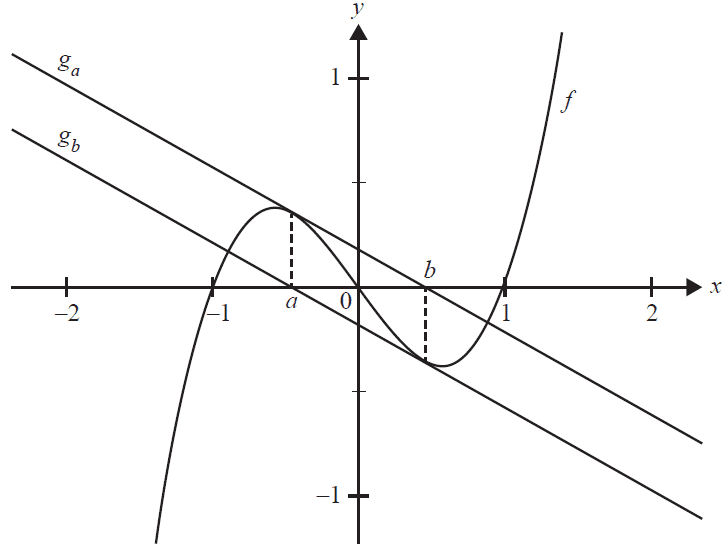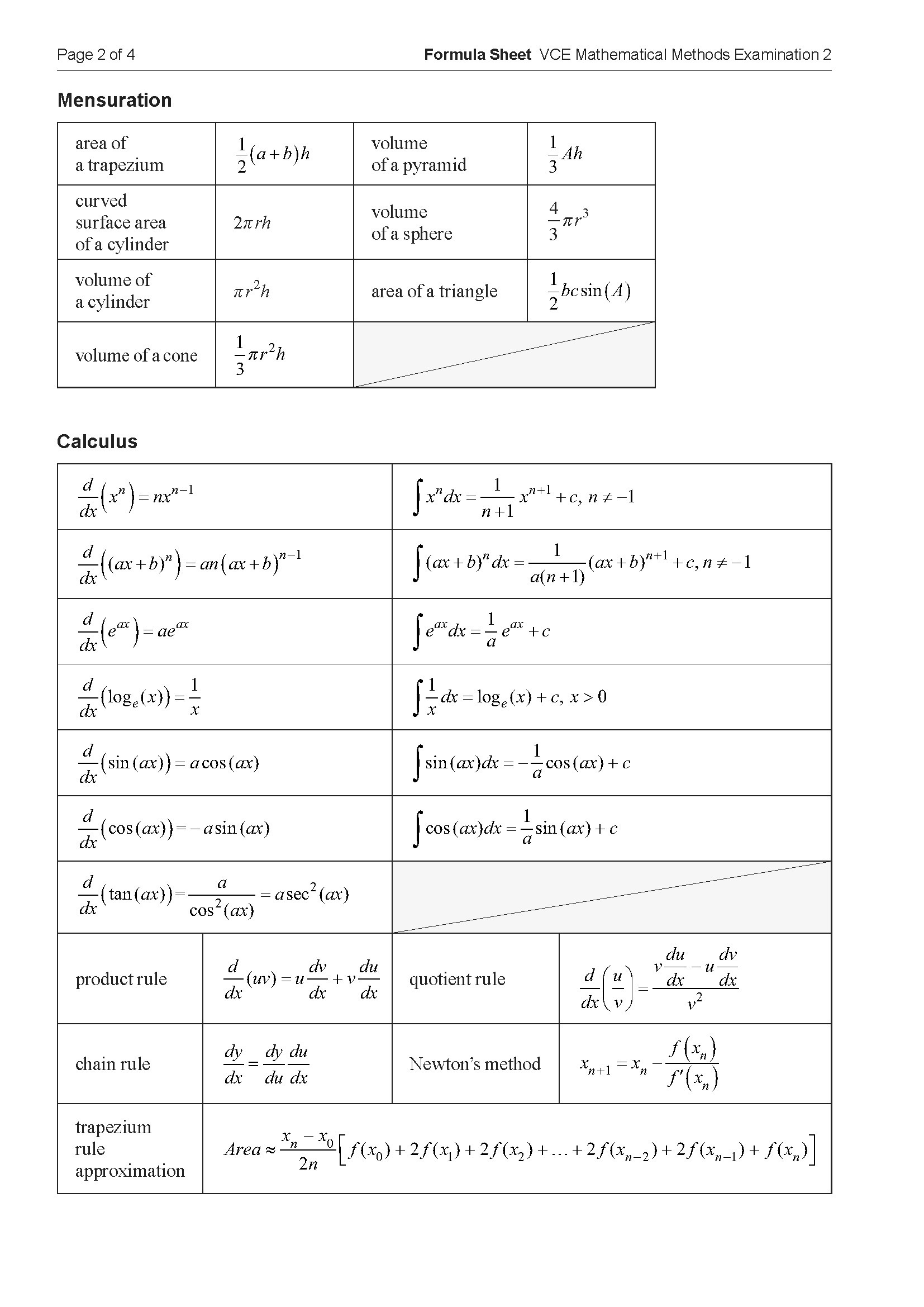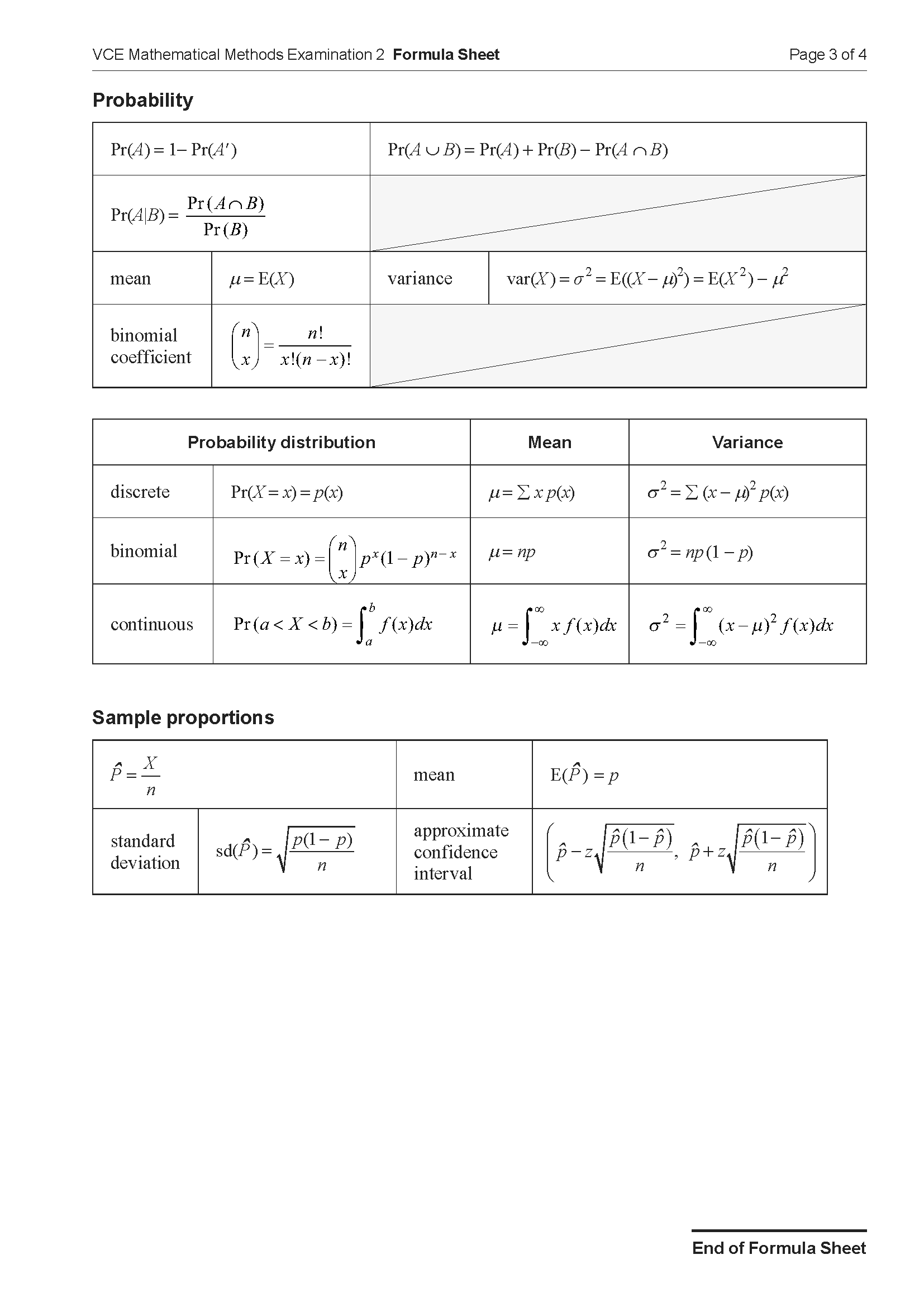2020 VCE Maths Methods Mini Test 10
Number of marks: 13
Reading time: 2 minutes
Writing time: 19 minutes
Section B – No Calculator
Instructions
• Answer all questions in the spaces provided.
• Write your responses in English.
• In questions where a numerical answer is required, an exact value must be given unless otherwise specified.
• In questions where more than one mark is available, appropriate working must be shown.
• Unless otherwise indicated, the diagrams in this book are not drawn to scale.
Let \(f: \mathbb{R} \to \mathbb{R}\), \(f(x) = x^3 - x\).
Let \(g_a: \mathbb{R} \to \mathbb{R}\) be the function representing the tangent to the graph of \(f\) at \(x=a\), where \(a \in \mathbb{R}\).
Let \((b, 0)\) be the \(x\)-intercept of the graph of \(g_a\).
a. Show that \(b = \frac{2a^3}{3a^2-1}\). 3 marks
b. State the values of \(a\) for which \(b\) does not exist. 1 mark
c. State the nature of the graph of \(g_a\) when \(b\) does not exist. 1 mark
d.
i. State all values of \(a\) for which \(b = 1.1\). Give your answers correct to four decimal places. 1 mark
ii. The graph of \(f\) has an \(x\)-intercept at \((1, 0)\).
State the values of \(a\) for which \(1 \le b < 1.1\). Give your answers correct to three decimal places. 1 mark
The coordinate \((b, 0)\) is the horizontal axis intercept of \(g_a\).
Let \(g_b\) be the function representing the tangent to the graph of \(f\) at \(x=b\), as shown in the graph below.

e. Find the values of \(a\) for which the graphs of \(g_a\) and \(g_b\), where \(b\) exists, are parallel and where \(b \ne a\). 3 marks
Let \(p: \mathbb{R} \to \mathbb{R}\), \(p(x) = x^3 + wx\), where \(w \in \mathbb{R}\).
f. Show that \(p(-x) = -p(x)\) for all \(w \in \mathbb{R}\). 1 mark
A property of the graphs of \(p\) is that two distinct parallel tangents will always occur at \((t, p(t))\) and \((-t, p(-t))\) for all \(t \ne 0\).
g. Find all values of \(w\) such that a tangent to the graph of \(p\) at \((t, p(t))\), for some \(t > 0\), will have an \(x\)-intercept at \((-t, 0)\). 1 mark
h. Let \(T: \mathbb{R}^2 \to \mathbb{R}^2\), \(T\begin{pmatrix} x \\ y \end{pmatrix} = \begin{pmatrix} m & 0 \\ 0 & n \end{pmatrix} \begin{pmatrix} x \\ y \end{pmatrix} + \begin{pmatrix} h \\ k \end{pmatrix}\), where \(m, n \in \mathbb{R}\setminus\{0\}\) and \(h, k \in \mathbb{R}\).
State any restrictions on the values of \(m, n, h\) and \(k\), given that the image of \(p\) under the transformation \(T\) always has the property that parallel tangents occur at \(x=-t\) and \(x=t\) for all \(t \ne 0\). 1 mark
End of examination questions
VCE is a registered trademark of the VCAA. The VCAA does not endorse or make any warranties regarding this study resource. Past VCE exams and related content can be accessed directly at www.vcaa.vic.edu.au

